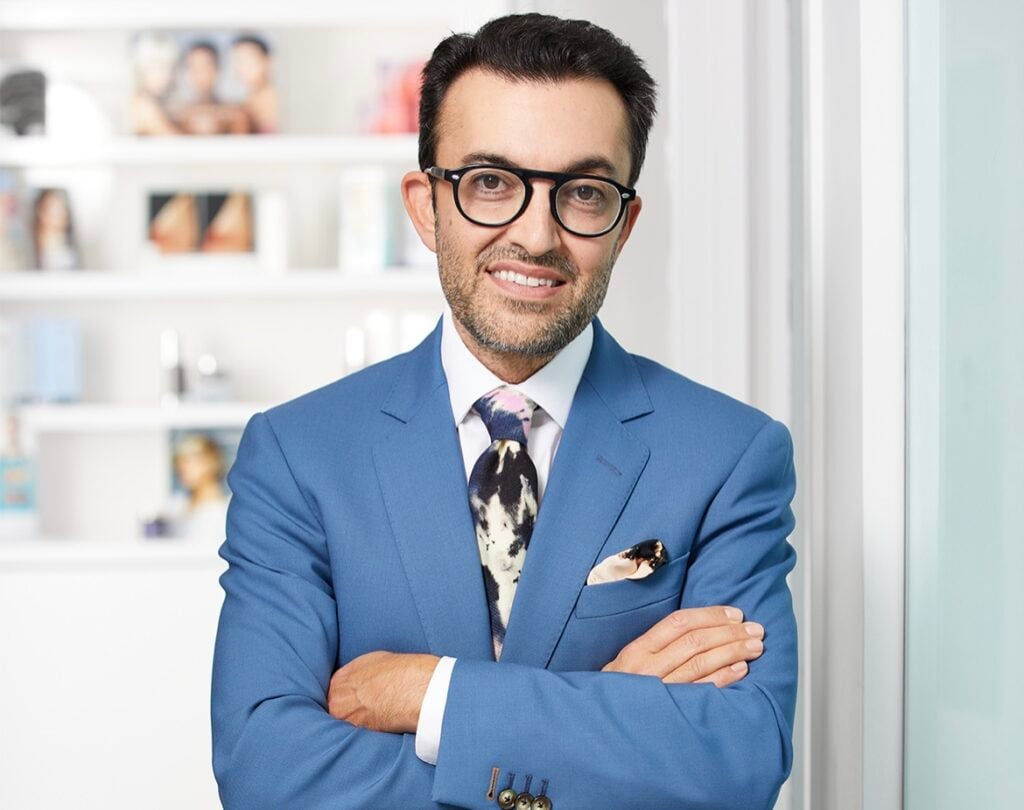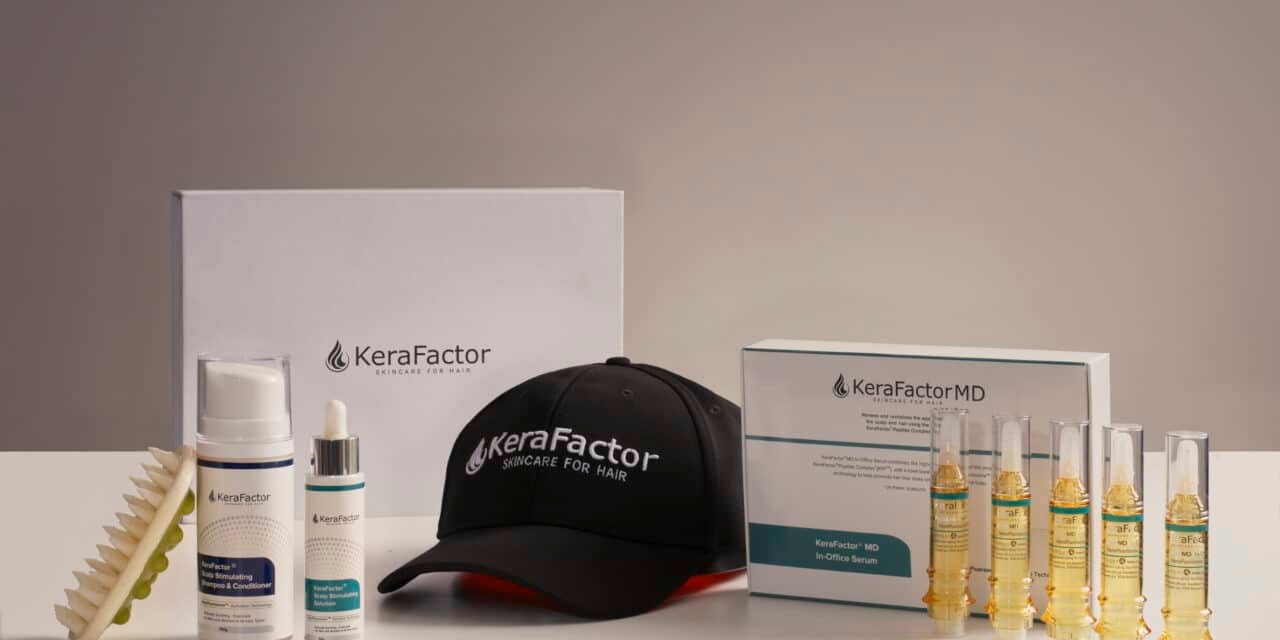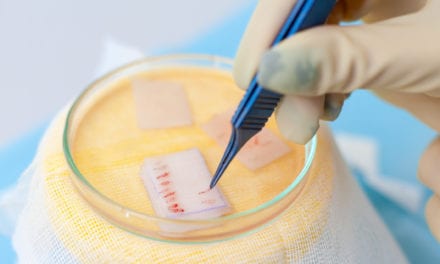Plastic surgeon Arash Moradzadeh, MD, explains how KeraFactor supports modern hair restoration with regenerative, hormone-free therapies tailored to the needs of today’s aesthetic patient.
Hair restoration is fast becoming a must-have service line in aesthetic practices—and for good reason. Patients are increasingly seeking earlier, non-surgical interventions that not only prevent hair loss but also optimize overall hair health. This growing demand, especially among women and patients experiencing GLP-1–related shedding, is shifting how plastic surgeons approach scalp and follicular care. One solution gaining traction in the space is KeraFactor—a regenerative, hormone-free system designed to stimulate hair growth through targeted peptides and advanced delivery technology.
To better understand the clinical science and practice integration behind KeraFactor, Plastic Surgery Practice spoke with Arash Moradzadeh, MD, a double board-certified facial plastic and reconstructive surgeon and ENT/head and neck surgeon, who is in private practice at AM Facial Plastics with offices in Beverly Hills and Santa Barbara, Calif. Moradzadeh shared his insights on the causes of hair loss, how regenerative therapies like KeraFactor fit into a plastic surgery workflow, and why scalable, non-invasive solutions are driving the next wave of aesthetic innovation.

Plastic Surgery Practice: From a clinical standpoint, what should plastic surgeons understand about the most common causes of hair loss in men and women—and how do those underlying factors inform treatment strategies?
Arash Moradzadeh, MD: Hair loss is often multifactorial. In men, we most commonly see androgenetic alopecia driven by DHT sensitivity. In women, the picture is often more complex, ranging from hormonal shifts (peri- and post-menopause), nutritional deficiencies, stress, and post-partum shedding to inflammatory or autoimmune conditions. As plastic surgeons, understanding the cause informs how we treat. For example, early thinning might respond well to topical regenerative therapies like KeraFactor, while more advanced cases may need to combine in-office procedures like KeraFactorMD or even surgical restoration. The key is layering approaches with early intervention, addressing both the scalp microenvironment and the hair growth cycle.
PSP: There’s no shortage of products claiming to address hair thinning and loss. What makes the ingredient profile in KeraFactor different, and how is it designed to work across different patient types?
Moradzadeh: What sets KeraFactor apart is its patented, biomimetic peptide complex. Unlike minoxidil or hormone-based products, KeraFactor contains specific growth factor engineered to target key stages of the hair cycle, stimulating follicular stem cells and improving vascularization without disrupting hormones. The unique nanoliposome technology also dramatically improves absorption in the scalp allowing the product to get right where we need it to work. The formulation is drug-free and hormone-free, making it a safe choice for both men and women of all hair and skin types, including patients with sensitivities or those avoiding pharmaceuticals.
PSP: How does the KeraFactor product line address the varying needs of male and female patients, and where have you seen the most promising outcomes in terms of treatment areas or stages of hair loss?
Moradzadeh: The KeraFactor line is gender-neutral in its science, but customizable in its application. Men with receding hairlines or crown thinning respond well when treatment begins early often seeing increased density and thickness in these miniaturizing zones. For women, we often treat diffuse thinning or post-partum shedding with excellent outcomes, especially when integrated with supportive modalities like laser therapy. One standout area has been using KeraFactor MD in-office with fractional lasers or microneedling, followed by take-home KeraFactor Solution with the KeraFlex Duo Laser Cap to maintain results, particularly effective in Stage I–III hair loss.
PSP: Can you walk us through the current range of KeraFactor products and how they are typically integrated into a hair restoration protocol in a plastic surgery setting?
Moradzadeh: Absolutely. In our practice, we typically begin with the KeraFactorMD Serum, a high-potency professional solution used in-office post a gentle laser treatment to help deliver the concentrated product directly to the hair root. This primes the follicular environment and accelerates visible improvement. For at-home care, we recommend the Scalp Stimulating Solution, applied daily, and the 2-in-1 Scalp Stimulating Shampoo & Conditioner to support scalp health. We also integrate the KeraFlex Laser Cap or KeraFlex Duo (for those wanting dual-wavelength laser diode therapy) into our protocols. Patients appreciate that it’s a fully hormone-free system, and from a provider standpoint, it’s easy to build a cohesive, revenue-generating treatment package. Additionally, I can stack it with topicals containing Minoxidil and finasteride safely.
PSP: As demand for hair restoration grows among aesthetic patients, how does KeraFactor support private practices in building and scaling this service line, from training to marketing to patient education?
Moradzadeh: KeraFactor is one of the most turnkey systems we’ve implemented. The team provides not just clinical training, but also marketing assets, social media content, patient brochures, treatment protocols, and support for events or open houses. They understand what practices need to convert interest into revenue, whether it’s staff education, digital before/after libraries, or consumer-friendly explanations of the science. From an ROI standpoint, it’s scalable, with low overhead and high demand, especially as hair restoration becomes a key component of comprehensive aesthetic care.
PSP: What trends are you seeing in the hair restoration space overall, and where do you think plastic surgeons have the most opportunity to meet evolving patient expectations in this category?
Moradzadeh: Patients today want non-surgical solutions first. They’re proactive, educated, and looking for clinically validated, science-forward treatments. We’re also seeing a surge in female patients seeking hair support not just for loss, but for optimizing hair density and health. Also with the weight loss revolution, people on GLP-1 medications see increased shedding and Kerafactor is key in helping combat this. There is a major opportunity for plastic surgeons to introduce regenerative hair protocols earlier in the hair loss journey. With tools like KeraFactor, we can offer safe, effective, science-backed solutions that are free from pharmaceuticals, positioning our practices at the forefront of a growing, recurring care category. PSP
Photos: KeraFactor




